
Strikingly beautiful, the secretive Narina Trogon Apaloderma Narina is notoriously difficult to find. These brightly coloured birds can be surprisingly tricky to locate in the already challenging forest habitat they frequent and their presence is often best revealed by their monotonous call. Even more difficult than seeing a trogon is locating the species' nest cavity, and data about its nesting habits are relatively limited.
The following notes were made after observing a single natural nest site in the hollow trunk of a dead avocado tree on the edge of a stand of riparian forest, south-west of East London in the Eastern Cape. They record the breeding attempts of presumably the same pair of birds for three consecutive summers, from the spring of 2019 to late February 2022.
The vertical nest cavity, some 1.5 metres above the ground, was 600 millimetres deep with an internal diameter of 200 millimetres and an entrance of 100 x 200 millimetres. All the data contained in the accompanying table were from this nest site. As no individual identification verification was possible, I have assumed that the breeding birds were the same individuals returning to the nest cavity on each of the recorded breeding attempts.
The rapid turnaround time of three weeks between the pair successfully fledging two chicks in November 2019 and laying a clutch of two eggs in December could be explained by the possible predation of the fledglings after they left the nest or by a different pair of breeding birds occupying the nest cavity.
This story is from the November/December 2022 edition of African Birdlife.
Start your 7-day Magzter GOLD free trial to access thousands of curated premium stories, and 8,500+ magazines and newspapers.
Already a subscriber ? Sign In
This story is from the November/December 2022 edition of African Birdlife.
Start your 7-day Magzter GOLD free trial to access thousands of curated premium stories, and 8,500+ magazines and newspapers.
Already a subscriber? Sign In

EXPLORING NEW HORIZONS
Keith Barnes, co-author of the new Field Guide to Birds of Greater Southern Africa, chats about the long-neglected birding regions just north of the Kunene and Zambezi, getting back to watching birds and the vulture that changed his life.

footloose IN FYNBOS
The Walker Bay Diversity Trail is a leisurely hike with a multitude of flowers, feathers and flavours along the way.

Living forwards
How photographing birds helps me face adversity
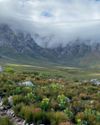
CAPE crusade
The Cape Bird Club/City of Cape Town Birding Big Year Challenge

water & WINGS
WATER IS LIFE. As wildlife photographer Greg du Toit knows better than most.
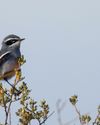
winter wanderer
as summer becomes a memory in the south, the skies are a little quieter as the migrants have returned to the warming north. But one bird endemic to the southern African region takes its own little winter journey.
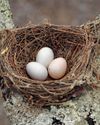
when perfect isn't enough
Egg signatures and forgeries in the cuckoo-drongo arms race
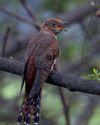
Southern SIGHTINGS
The late summer period naturally started quietening down after the midsummer excitement, but there were still some classy rarities on offer for birders all over the subregion. As always, none of the records included here have been adjudicated by any of the subregion's Rarities Committees.
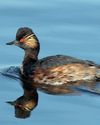
flood impact on wetland birds
One of the features of a warming planet is increasingly erratic rainfall; years of drought followed by devastating floods. Fortunately, many waterbirds are pre-adapted to cope with such extremes, especially in southern Africa where they have evolved to exploit episodic rainfall events in semi-arid and arid regions. But how do waterbirds respond to floods in areas where rainfall - and access to water - is more predictable? Peter Ryan explores the consequences of recent floods on the birds of the Western Cape's Olifants River valley.
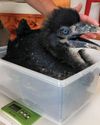
a star is born
It’s every producer’s dream to plan a wildlife television series and pick the right characters before filming.